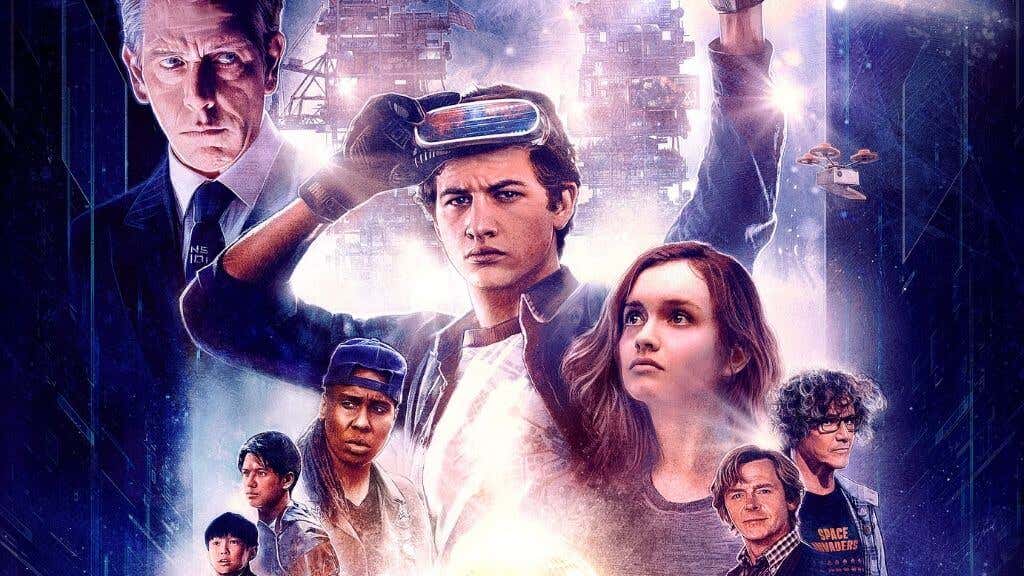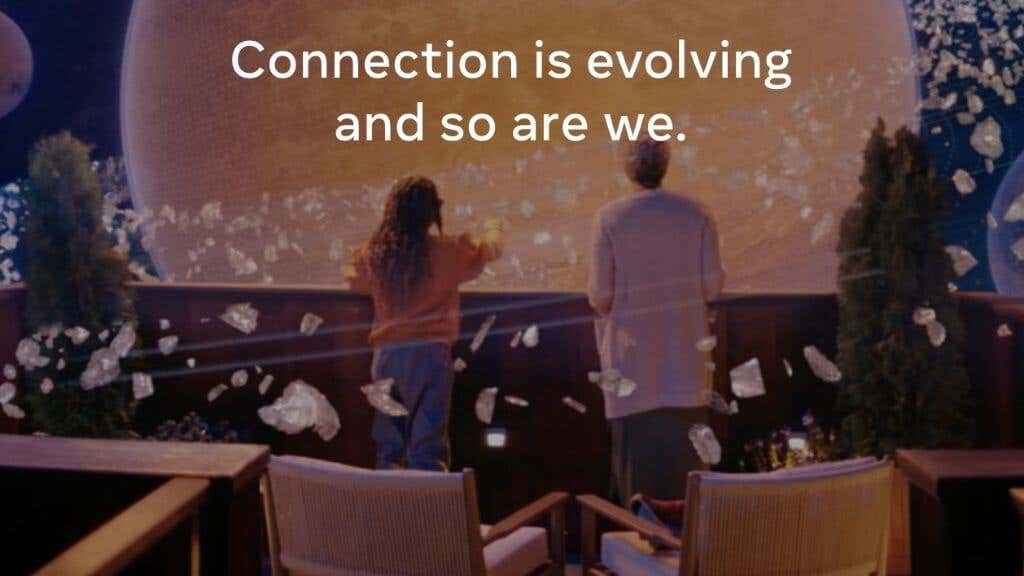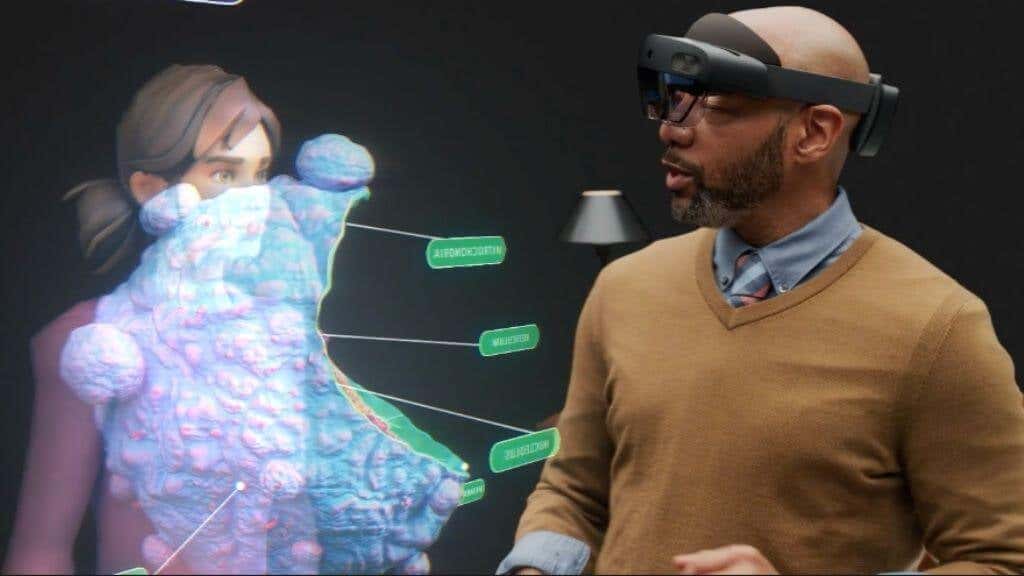What Is the Metaverse and Why Should You Care?
The metaverse is a vision of the future of the internet where many different persistent virtual worlds are connected and co-exist. The metaverse turns today’s internet into a place where you can live in an embodied way using immersive technologies such as Virtual- and Mixed-Reality.
The metaverse is also a somewhat vague idea adopted by prominent technology personalities. So its meaning is still in flux, although in all iterations, the general idea is to unify the internet into a shared virtual space where we can live at least part of our lives.
Where Did the Term “Metaverse” Come From?
Like many technology terms, “metaverse” was first coined by famous science fiction author Neal Stephenson in his novel Snow Crash. The metaverse of Snow Crash appears to users as a city environment. It’s a 100-meter-wide road that spans the circumference of a featureless virtual planet. That’s more than 40,000 miles of virtual road!
Users can buy property in the metaverse and then develop their virtual buildings. Users can appear as avatars of any form, apart from size limitations. People connect to the metaverse from VR terminals in their homes. Some users never leave the metaverse and permanently carry portable VR gear around.
One of the most striking on-screen depictions of a metaverse is the Steven Spielberg film Ready Player One. Based on the novel of the same name by author Ernest Cline, the characters spend almost all their time in OASIS (Ontologically Anthropocentric Sensory Immersive Simulation).
OASIS is a rich and complex virtual world that connects everything. Users move freely from one place to another as if it’s all part of a single reality. OASIS is notable for being both a shared virtual world and a multiplayer video game, with overarching scores and goals.
Metaverse-like virtual worlds are a mainstay of fiction in the Cyberpunk genre. In the Cyberpunk 2077 video game (based on a tabletop RPG franchise), “netrunners” experience the online world as a physical space.
Even the Matrix from the eponymous 1999 film starring Keanu Reeves as Neo is essentially a metaverse. The difference is the people in the simulation don’t know it’s a simulation.
Ultimately, the concept of a metaverse predates the term itself, and the people who lead today’s big tech companies have grown up with the metaverse idea as a prominent part of science fiction.
The Metaverse We Already Have
Depending on how important you think certain aspects of the metaverse concepts are, we’ve already experienced the metaverse in various forms over the years. The text-based Multi-user Dungeons (MUDs) that started life with Colossal Cave Adventure back in 1975 could be considered a metaverse precursor.
MUDs, at least, are a definite precursor to modern MMORPGs such as Everquest or World of Warcraft. These are persistent online worlds that users can live another life in. So the spirit of a metaverse is there, despite MMORPGs being central to one provider.
Today, we have games and apps that give a closer taste to at least part of the metaverse experience.
Video Games
We’ve already mentioned online games like World of Warcraft as examples of a metaverse-like experience, but some games are being more direct about it. The hyper-popular Fortnite Battle Royale game has already begun to outgrow its roots. The game is the result of Epic Games’ attempt to build a GaaS (Games as a Service) title, and it’s been a massive success.
Fortnite is more than an online game. It’. It’s a cultural phenomenon and a place where people simply hang out. Epic started to tie in with other franchises and brands within Fortnite, in a way very reminiscent of Reader Player One.
The game started to host major events, including a few successful virtual concerts with big-name artists.
Now Fortnite is formally adding “Party Worlds.” These are “designed as places for players to hang out, play fun mini-games, and make new friends.” Only time will tell if this runs Fortnite into a true metaverse, but given how it’s been developing over the years, it might have the best chance.
That doesn’t mean other popular games aren’t trying to get into the action. Roblox might have a better pedigree as a metaverse experience since it focuses on letting users create their worlds and experiences.
VR Social Platforms
Second Life is undoubtedly the most on-the-nose real-life example of a metaverse. In Second Life, you can buy property and virtual items to put inside your virtual home or business. People walk around as their avatars and play, explore, flirt, and generally do most of the same things they’d do in reality.
Second Life was launched back in 2003, and although it’s not nearly as popular today as it once was, it’s maintained a committed following. With the VR revolution, there were plans to bring Second Life into the VR era with a spinoff, but that idea was abandoned. At the time, we didn’t yet have affordable yet powerful virtual reality headsets such as the Quest 2, so VR penetration was low. Now that people are buying them in more significant numbers, it’s easier to justify pouring in resources.
According to one of the founders of Second Life, Philip Rosedale, the “iPhone moment” for VR headsets may be some way off. However, with a renewed interest in the idea of a metaverse, Rosedale is working to evolve Second Life for what’s to come.
In the meantime, we have VR-focused social platforms such as VRChat, which gets around the VR requirement by making VR optional. You can access the platform in “desktop mode” using a regular screen. This is like a user from Snow Crash who used lower-end terminals. They could still participate but in a limited fashion.
Facebook’s Vision of the Metaverse
When Facebook bought VR giant Oculus, the company already had a clear idea of why they wanted to invest in VR. Although social media has been a significant success for the company, the market has become competitive. Facebook has also started seeing a user base decline and a loss of teenage users.
The company decided to rebrand itself as “Meta,” another strong hint at its metaverse plans. Mark Zuckerberg has stated the company now plans to build a metaverse connecting various systems and products for a cohesive digital world. The success of the Oculus Quest means that it may have a solid user base to entice into this metaverse, although they have backtracked on the Facebook requirement for Quest users.
While Facebook’s metaverse plans are still in the early stages, there’s now the Horizon Worlds app for Oculus Rift S or Quest 2 users. Formerly known as Facebook Horizons, this is effectively a metaverse platform with perhaps a more pronounced game focus. Facebook had experimented with apps like Oculus Rooms, Oculus Venues, and Facebook spaces. Some of which could be accessed through the now-discontinued Oculus Go. Horizons offers a full motion-captured, interactive world built around user-generated content.
While Horizon Worlds is a place to socialize and play, Horizon Workrooms also offers virtual meeting rooms and integration with video call technology. Given the work-from-home trend driven by the pandemic, it seems clear that apps like Workrooms are set to compete directly with the likes of Skype and Zoom.
Microsoft’s Vision of the Metaverse
Microsoft is another major player in the metaverse game, not to be left out of the loop. With technology such as the Microsoft Hololens headsets and Windows Mixed Reality, they already have a foothold on the technology side. Not to mention their massive Azure data center resources and knowledge. Microsoft also has expertise in game development from its PC history and, of course, its Xbox consoles. However, VR is oddly absent from Xbox, despite Sony’s last two PlayStations having VR options.
Microsoft has said metaverse plans for its big video game franchises such as Minecraft and Halo. The company has been remarkably open about how it sees the metaverse. Late in 2021, they published a YouTube video titled What is Microsoft’s Metaverse?
This video lays it all out, with Microsoft simply saying that they see a metaverse as a digital place where people go to meet, play, and work. It’s “an internet you can interact with.” Microsoft emphasizes that its goal is to create avatar systems that let you bring your fully embodied humanity into the metaverse. Some early examples of this include projecting Microsoft Teams participants into a virtual auditorium.
Microsoft also feels that technologies such as real-time translation are essential to help people in the metaverse work, socialize, and play together. Since our physical distance from each other becomes irrelevant in the metaverse, it stands to reason that other barriers, such as language, will now come into play.
Mixed Reality Is the Key to the Metaverse
We are still beginning the technology and software that will make the metaverse feasible. Although VR technology has experienced a significant leap, starting in 2016 with the Oculus Rift’s commercial release, VR systems are not the best way to integrate the metaverse into our lives.
Mixed reality is the true metaverse technology. Here you can move along a spectrum from full VR to augmented reality, where the virtual environment and the physical world are blended seamlessly. This means we need wearable hardware that’s small and light enough to wear for hours a day or even permanently. Think of something with the physical size of Google Glass, but more advanced than a Quest 2 or Hololens 2.
Most classic metaverse concepts tend to look like VR. Still, it’s becoming clear that Mixed Reality offers the sort of flexibility you need to seamlessly step between the physical world and the metaverse or live in a hybrid space between the two. Future headsets will be much lighter so that they can be worn all day, and in the long term, the technology that plugs you into virtual spaces could very well be implantable.
Metaverse Network Infrastructure
For a metaverse as conceived here to work, you need to shift a huge amount of data over local and global networks. These networks have to be reliable and have very low latency. After all, being in the metaverse means interacting with other people in a virtual world in real-time. Having a second or two of latency in a Skype call is bad enough, but imagine the people in your immersive virtual world were a few seconds out of sync with you!
We don’t yet have the network infrastructure to make a global, true metaverse possible. Millimeter-wave 5G mesh technology is likely the closest thing we have. Still, that technology is only available in a few select places, and it will be many years before it’s commonplace.
5G mesh networks are designed to serve both bandwidth-hungry applications and ones that need low-latency feedback. For example, imagine a fleet of delivery drones flying through a city. Using a 5G mesh, all of these drones can be remotely controlled in real-time. This aspect of 5G networks also makes it perfect for the internet of things, where millions of devices are connected to the internet and share their data.
In embodied metaverses, networks will not just have to carry audio and video data, but motion, spatial mapping, and more.
Web3 and the Metaverse
Yet another new buzzword has amplified the hype around the metaverse in the form of “Web3”. This isn’t the Web 3.0 you might have heard of but instead describes a new internet architecture built from decentralized systems. Instead of having huge centralized data centers, the internet is distributed across nodes all over the net. You can combine the processing power and storage of everyone’s computers to do all the work needed to provide online services.
NFTs (Non-fungible Tokens), cryptocurrency, blockchain, smart contracts, and dApps (decentralized apps) are all examples of Web3 technology. While people like Mark Zuckerberg see the metaverse as a unification of all the tech giants’ centralized online resources, it might turn out that the real metaverse will exist as Web3 distributed simulations. At the very least, crypto could become the working currency of the virtual world in the metaverse.
The Metaverse Could be a Utopia or Dystopia
There are many concerns about what a true metaverse could mean for individuals and society. That’s perhaps not unexpected since other technologies such as social media or robotic automation also trigger concerns. It’s a good thing to be wary of new technologies, of course, and there’s real merit to many of the issues that have been raised.
For example, what if people start to prefer relationships with AI or virtual agents in the metaverse? Is there scope for new types of cyberbullying or scams? Will people become even more sedentary than current technology has made us?
On the utopian side of the fence, the metaverse could be a mind-expanding place where humans can live in a form of reality that’s friendlier than the real world, with the physical body safely in the physical world. Just like with current VR, many metaverse implementations will involve physically moving your body. So perhaps the issue of being sedentary could be improved.
As for the social changes, it’s always hard to predict what effect technology will have. For better or worse, our societies have already adapted to the world of social media and smart devices everywhere. Over the long-term, brain implant technology such as the experimental Neuralink may also increase certain types of psychological and even physical risk, but only time will tell.
Delving Deeper Into the Metaverse
Whichever vision of the metaverse ends up being closest to the metaverse we actually get, you can expect to hear more and more about the idea as key technologies begin to mature. When a company like Apple finally launches their rumored AR headset, and a future version of the Oculus Quest becomes so cheap that anyone can afford to have one, there will be many metaverse competitors vying for your attention.
If you want to dig deeply into the metaverse’s technical, social, and business aspects, we recommend reading the nine-part Metaverse Primer by Matthew Ball. It’s a great resource that will help you grasp the key concepts and massive scope of the metaverse, without needing an advanced degree to do so.
from Online Tech Tips https://ift.tt/VJicLl9
via IFTTT















Comments
Post a Comment